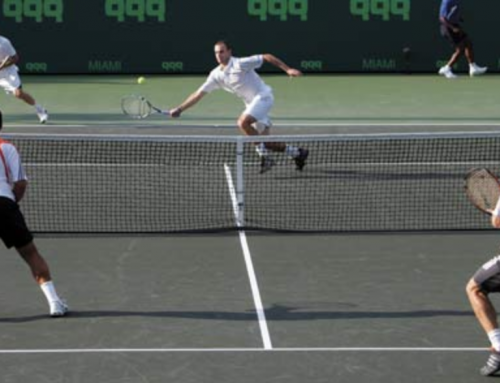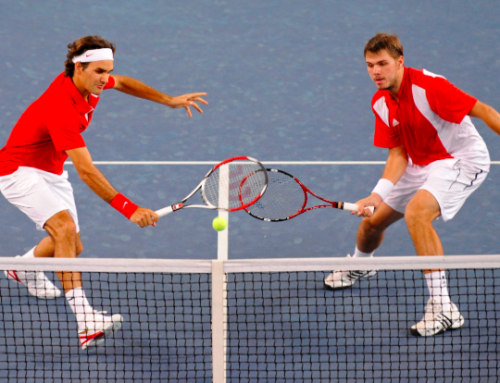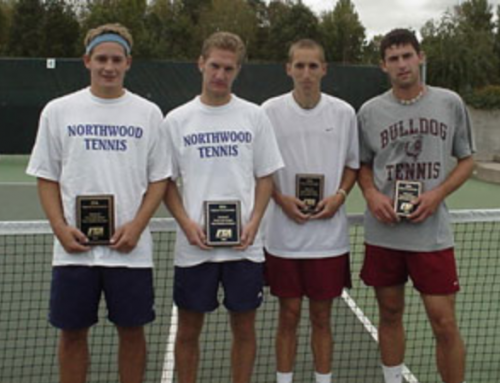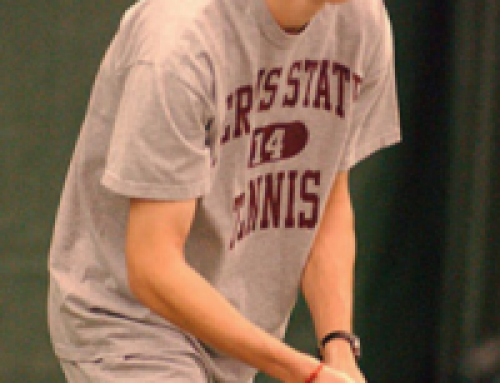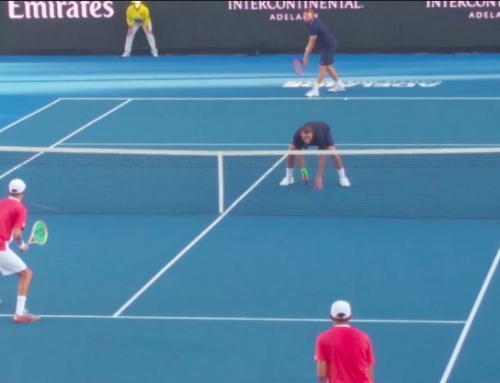This year, the top singles players came out in force to play doubles. Rafael Nadal and Marc Lopez were the defending champs and came back to defend. Roger Federer was teamed up with Stan Wawrinka for the first time in a tournament setting since they won the Olympics in 2008. Novak Djokovic paired up with his Davis Cup teammate, Viktor Troicki. Andy Murray, who lost early, played with his brother Jaime.
Federer had just played earlier in the day, looking (unsuccessfully) to break through against Djokovic. Last year, Federer and Djokovic met 5 times and Federer won 4 of those times (in Toronto, Basel, Shanghai, and the year-end championship). But the one loss he had was the one that hurt the most, which was the US Open semifinals.
While Federer credits winning the Olympic gold in doubles with salvaging his 2008 season (he would go on to win the US Open that year, after losing to Djokovic at the Australian Open, and Nadal at the French and Wimbledon), he is still hardly a doubles player. He has talent yes, but avoids playing doubles except in rare occasions to save himself for singles.
So a loss to Djokovic hurts Federer more than, say, losing doubles.
Although the Olympic champions were favored to win the finals, the “ponytail” team of Malisse and Dolgopolov (both of whom sport ponytails–Fed used to wear one many years ago too) had other ideas. The team was hastily formed just before the deadline when Malisse asked Dolgo if he wanted to play doubles. Typically, the lower ranked players play some doubles to augment their salary and get some more play when they lose early in singles.
The two had an impressive run through the tournament. The upset the Bryan brothers early on. They beat the Murray brothers. They beat the Indo-Pak duo of Bopanna-Qureshi in the semis. Every match they played went to a third set champion’s tiebreak. They were close to losing to the Murray brothers when the Murrays lead 6-2 and then had match points on their serve, but lost both points.
The duo play unusual tennis. On receiving, they both stay back standing in no-man’s land and taking big cracks at the ball, especially Dolgopolov. When Dolgo would serve, he would stay back and crack big shots. When Malisse would serve, Dolgo would poach a fair bit, showing that he can actually volley, even if he would prefer not to serve and volley. Dolgo can also hit huge serves which is a concession to modern doubles play (the doubles adage is to hit a 75% pace first serve).
Fed-Wawa took an early break, but then got broken back immediately, and then broken again to lose the first set 6-4. Fed-Wawa needed to fend of break points to keep holding serve. This pushed them into the tiebreak where the Swiss team took an early lead and won 7 points to 5.
With this momentum, the Swiss team must have thought their chances were good to win the 10 point tiebreak, but a few errors on the Swiss team including a blown volley by Federer gave the ponytail team the 10-7 win.
They enjoyed their experience so much that the two of them are going to play in Europe.
So congrats to the X-man and Dolgo. Fed may not have won the doubles, but inherently, it’s more fun to play.
In the meanwhile, he may think about revisiting his ponytail.
He was more dominant when he sported it.



